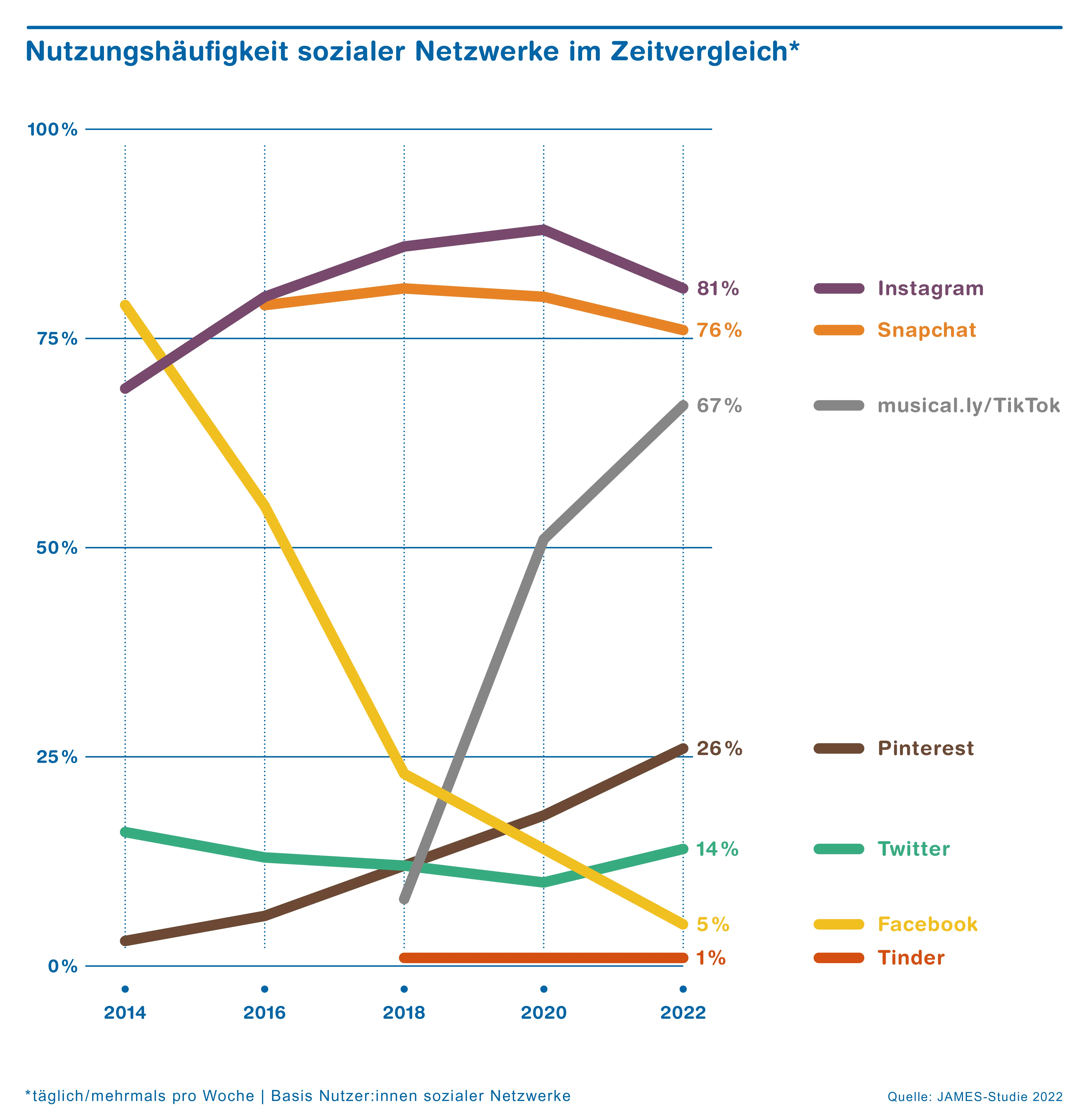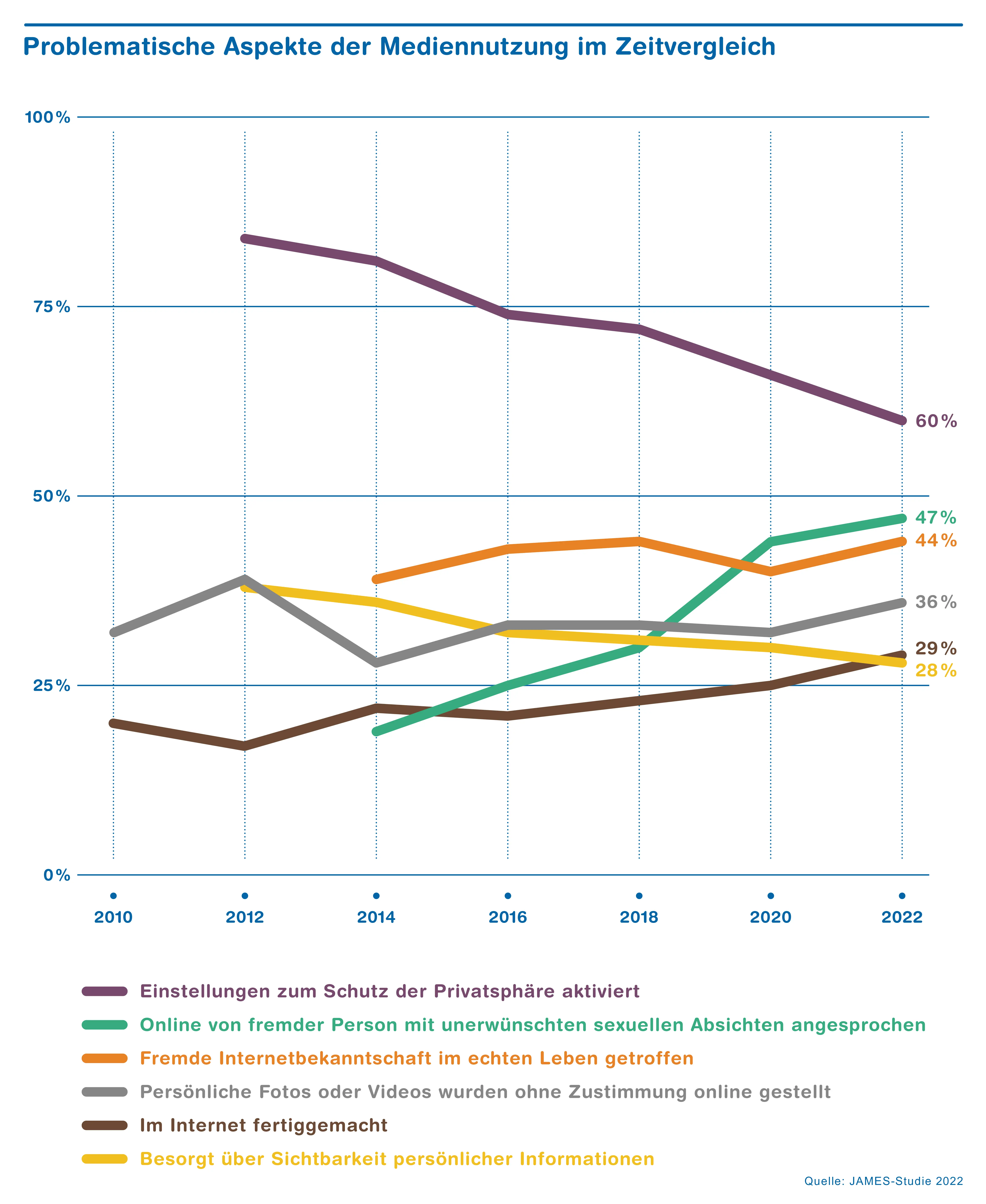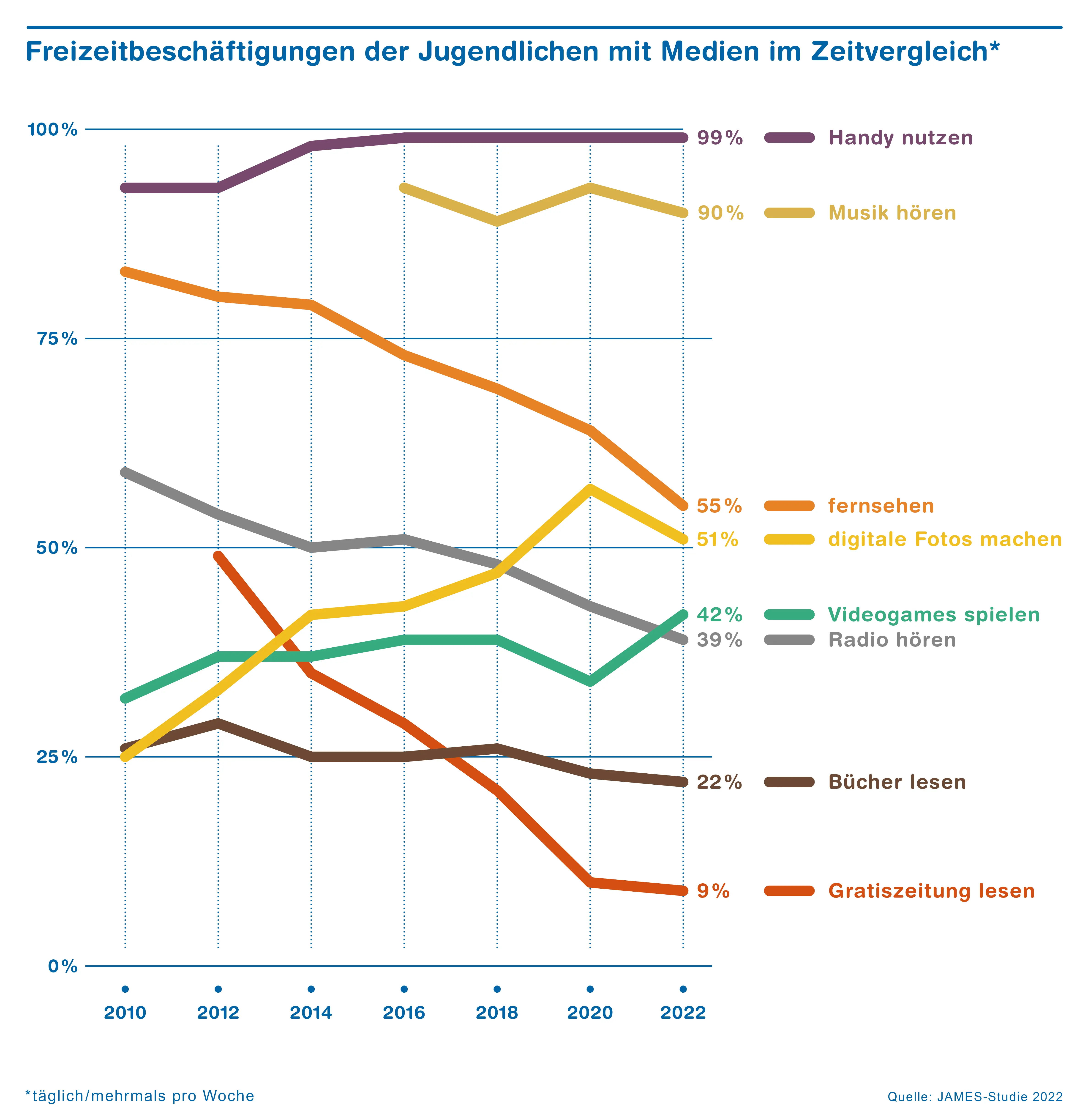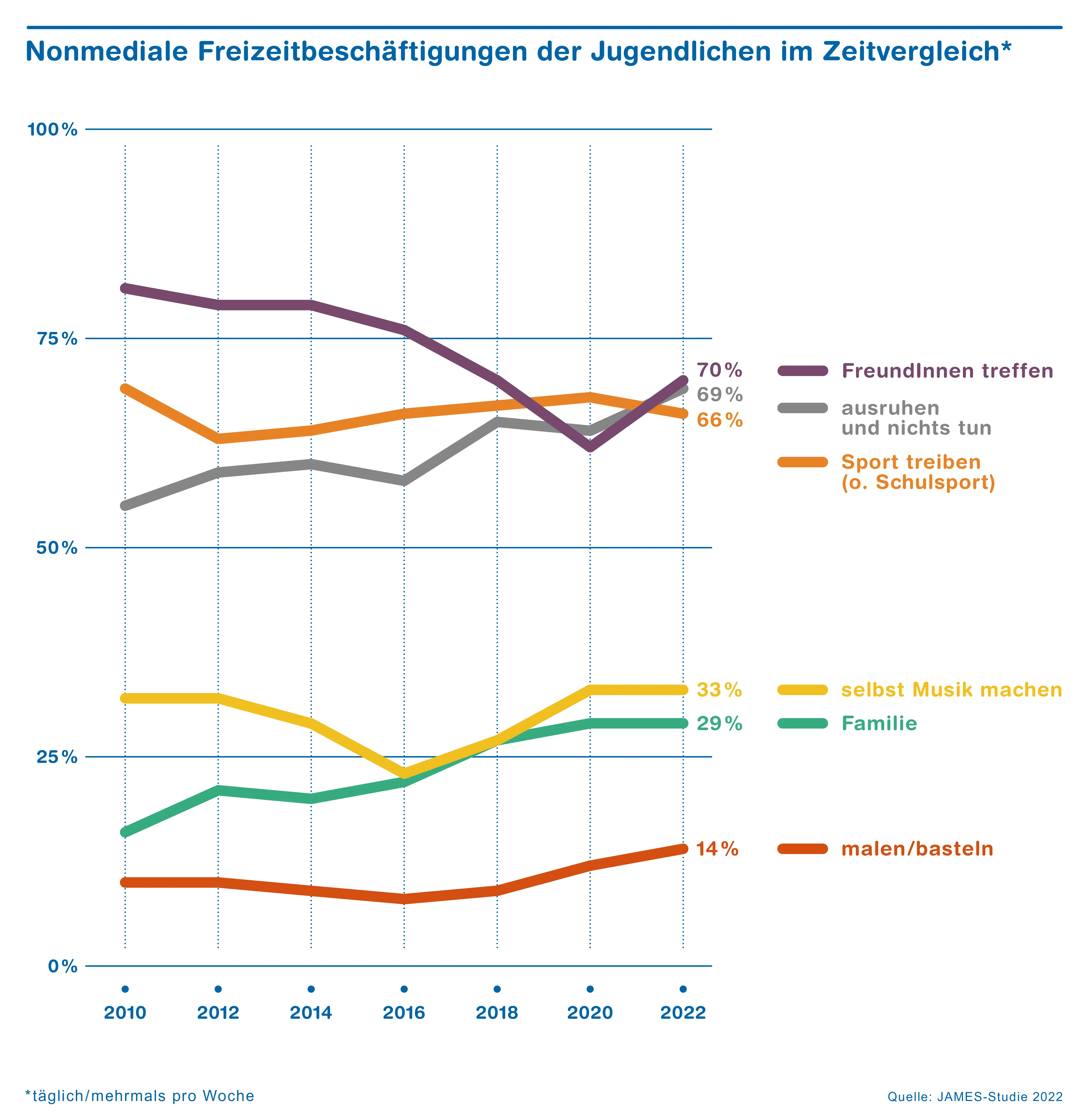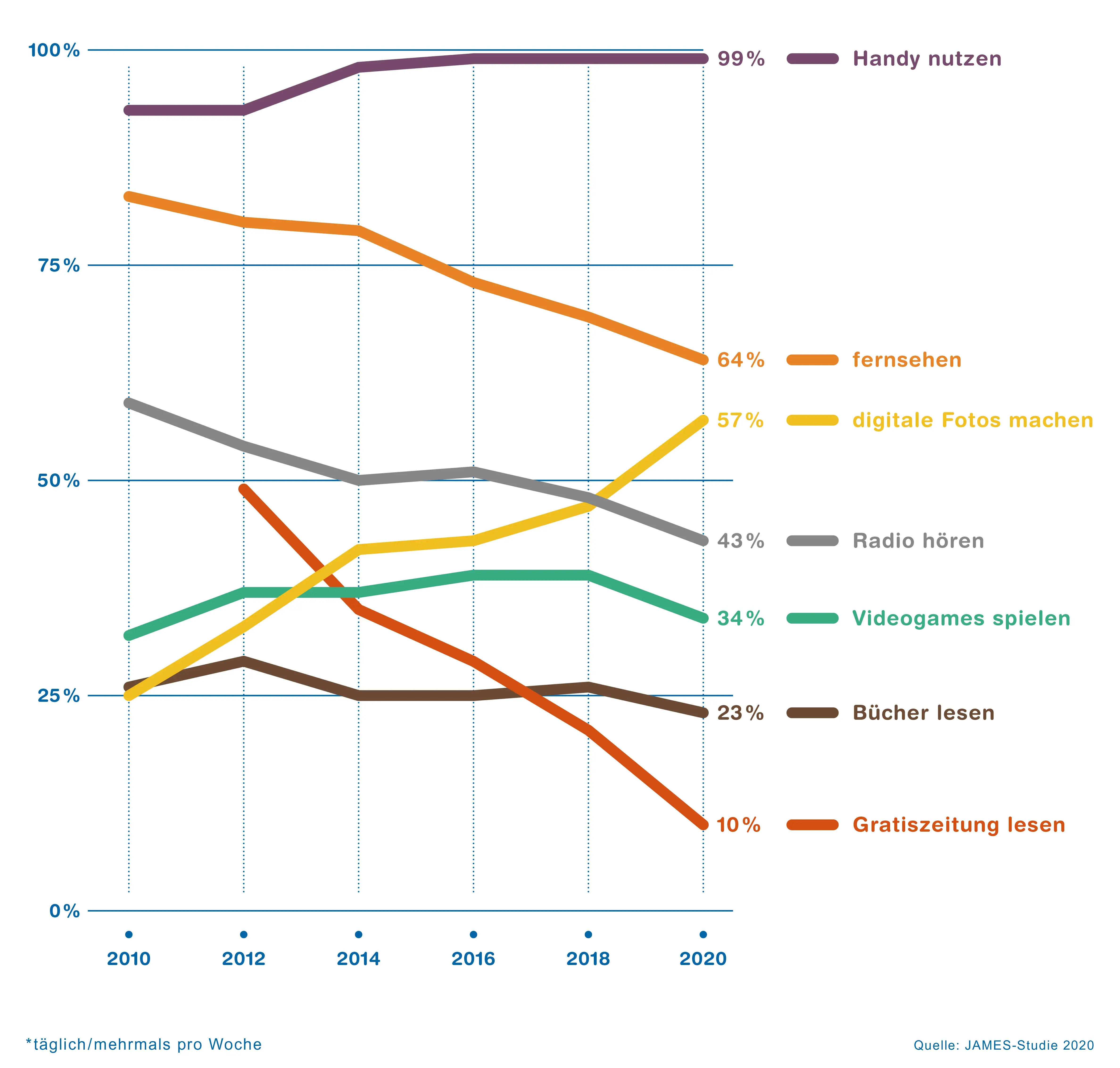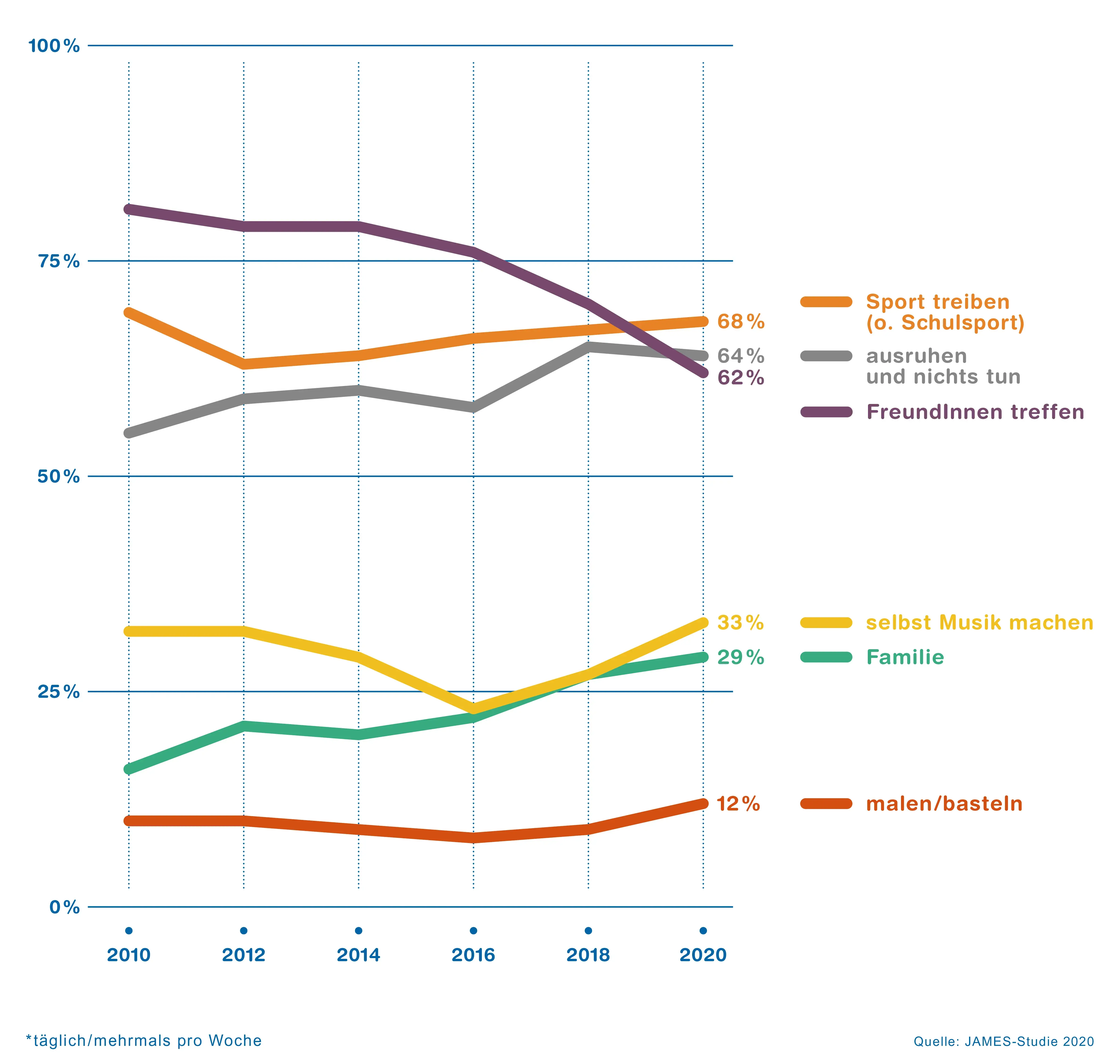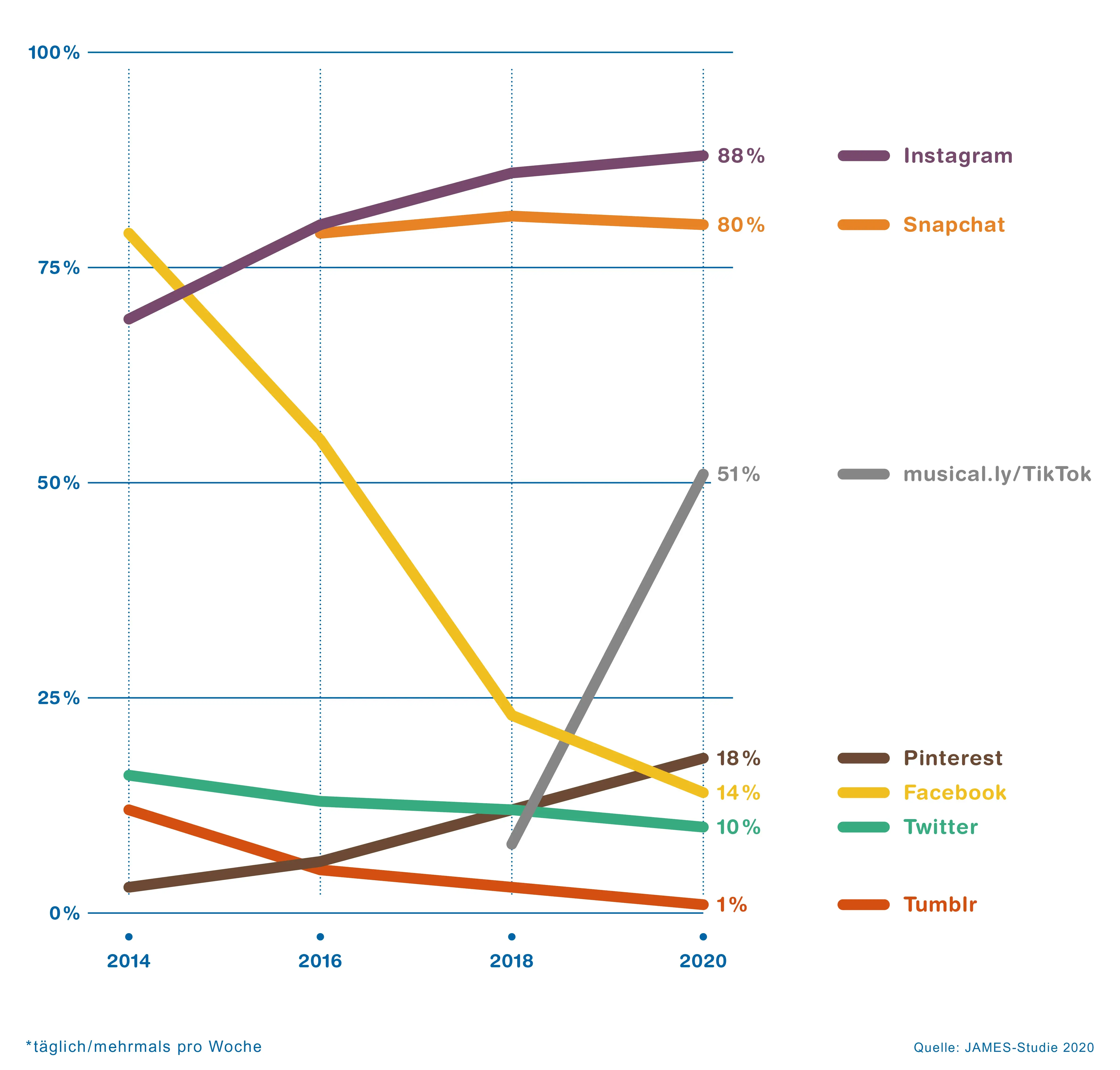JAMES Study
Since 2010 the JAMES studies have provided information on adolescents’ media use in Switzerland. JAMES stands for Jugend, Aktivitäten, Medien – Erhebung Schweiz [youth, activities, media – survey Switzerland]; the study is representative and conducted every 2 years. Each time, the study surveys over 1,000 adolescents aged 12 to 19 in the three large language regions of Switzerland.
AI tools conquer the everyday lives of young people

AI tools are conquering the everyday lives of young people at record speed. Around 71 per cent have already had experience with ChatGPT and the like, according to the JAMES Study 2024.
A third of all young people already use AI tools at least once a week, even though this technology only came to the attention of the masses at the end of 2022. This means that critically scrutinising information will become even more important in the future. Young people need to be sensitised to the topic and taught how to check information for accuracy.
Use of smartphone apps / media use
The smartphone is an important everyday companion for young people and they use a wide range of functions and applications. The question about the most popular smartphone apps revealed a fairly homogeneous picture. The most popular apps, the so-called Big Four, are Instagram, TikTok, Snapchat and WhatsApp.
Reading has also been a constant in media use for many years. In 2024, young people were asked about their favourite books for the first time in eight years. The Harry Potter series is still in first place, while Greg's Diary, The Hunger Games and The Lord of the Rings also made it into the top 5 in almost all surveys. An exciting fact: all of the entries in the top 5 are book titles that have also been made into films.
Girls are trendsetters on social networks

When it comes to widely used social networks, girls set the trends. They join new social networks earlier than boys, as the JAMES 2022 study shows.
Boys, on the other hand, play games more often, and free games are particularly popular. Girls are joining new networks earlier than boys, making them trendsetters. They are currently making much greater use of TikTok and Pinterest, and this was also the case with Instagram in 2014.
Use of social networks / leisure activities
Social networks continue to be among the most important media elements in the everyday lives of young people in Switzerland. Problematically, they are becoming more lax about data protection and sexual harassment has increased further.
Young people also maintain fewer but higher-quality friendships than ten years ago.
JAMES Study 2020
Internet use is increasingly shifting to smartphones
Young people in Switzerland are using their mobile phones during the week and especially at weekends for longer than they did two years ago. Mobile phones are most often used for chatting, surfing or social networking. The most popular social networks are Instagram, Snapchat and now TikTok. The problem is that more and more young people are being sexually harassed online.
In 2020, mobile phone and Internet use is a major part of the everyday media experience of young people in Switzerland. Meanwhile, the self-estimated usage time of mobile phones has increased significantly over the past two years: on a weekend day, it is almost two hours higher at around five hours compared with 2018. During the week, young people use their mobile phones more than three hours a day, 40 minutes longer than in 2018. Internet use, on the other hand, has decreased. Taken together, weekday Internet and mobile phone time remains stable. At the weekend, there is a significant increase of one hour. According to the ZHAW researchers, the fact that part of this year’s survey took place during the coronavirus lockdown may have influenced the results on media use.
“Young people had to stay at home more often during the lockdown and so used their mobile phones all the more intensively”, says ZHAW researcher and co-study leader Daniel Süss, who conducted the JAMES study with co-project leader Gregor Waller and his team. In addition, use of the Internet is increasingly shifting to mobile phones.
JAMES Study 2018
Flat-rate streaming becoming increasingly popular

For adolescents in Switzerland, Netflix, Spotify & Co. set the tone. Thanks to flat-rate streaming, more than half of young people have unlimited access to films, music, or games. Adolescents communicate mainly by cell phone via Instagram, WhatsApp, or Snapchat. Facebook is now used regularly by only one in five adolescents.
One in three adolescents in Switzerland have a video and music streaming subscription with Netflix, Spotify & Co. These two types of subscriptions have thus more than doubled in the last 2 years.
Even half of all households have these streaming subscriptions. The current JAMES Study 2018 also found that about one quarter of all households have flat-rate subscriptions for unlimited gaming.

"Whereas in previous years it was mainly the spread of smartphones that greatly changed young people’s usage practices, now music and video streaming services are playing a major role."
Document archive JAMES studies
JAMES-Studie 2016: Jugendliche immer länger online
Ergebnisbericht JAMES-Studie 2016 (PDF 3.25 MB)
JAMES-Studie 2014: Trends ersichtlich
Ergebnisbericht zur JAMES-Studie 2014 (PDF 2.91 MB)
JAMES-Studie 2012: Medieninhalte im Fokus
Ergebnisbericht zur JAMES-Studie 2012 (PDF 3.01 MB)
JAMES-Studie 2010: Erste Ausgabe
Ergebnisbericht zur JAMES-Studie 2010 (PDF 3.40 MB)
Team
Project leader ZHAW
Staff
Project Partner
mpfs Medienpädagogischer Forschungsverbund Südwest
Université de Genève
Università della Svizzera italiana
Project leader Swisscom
Michael In-Albon
